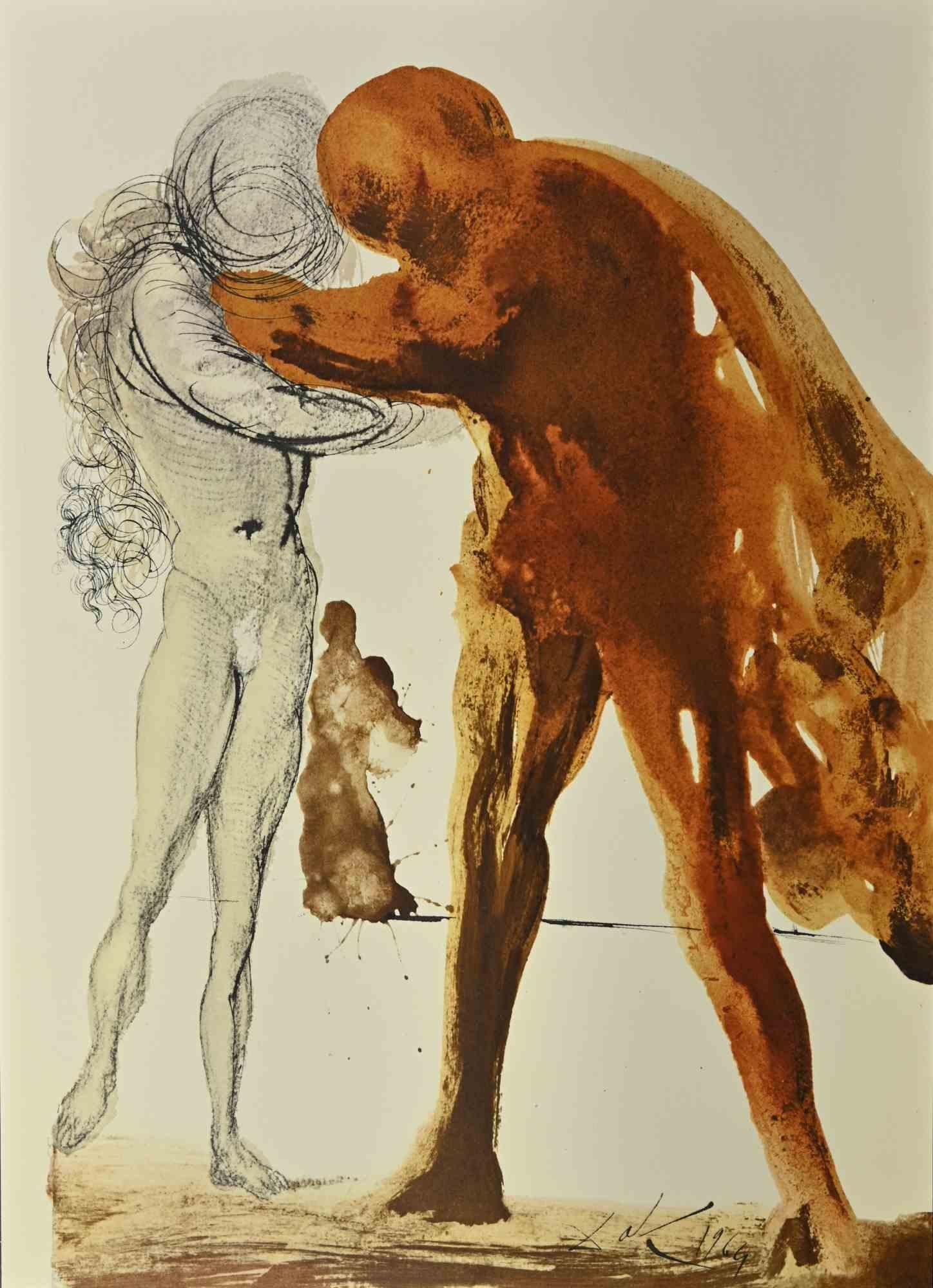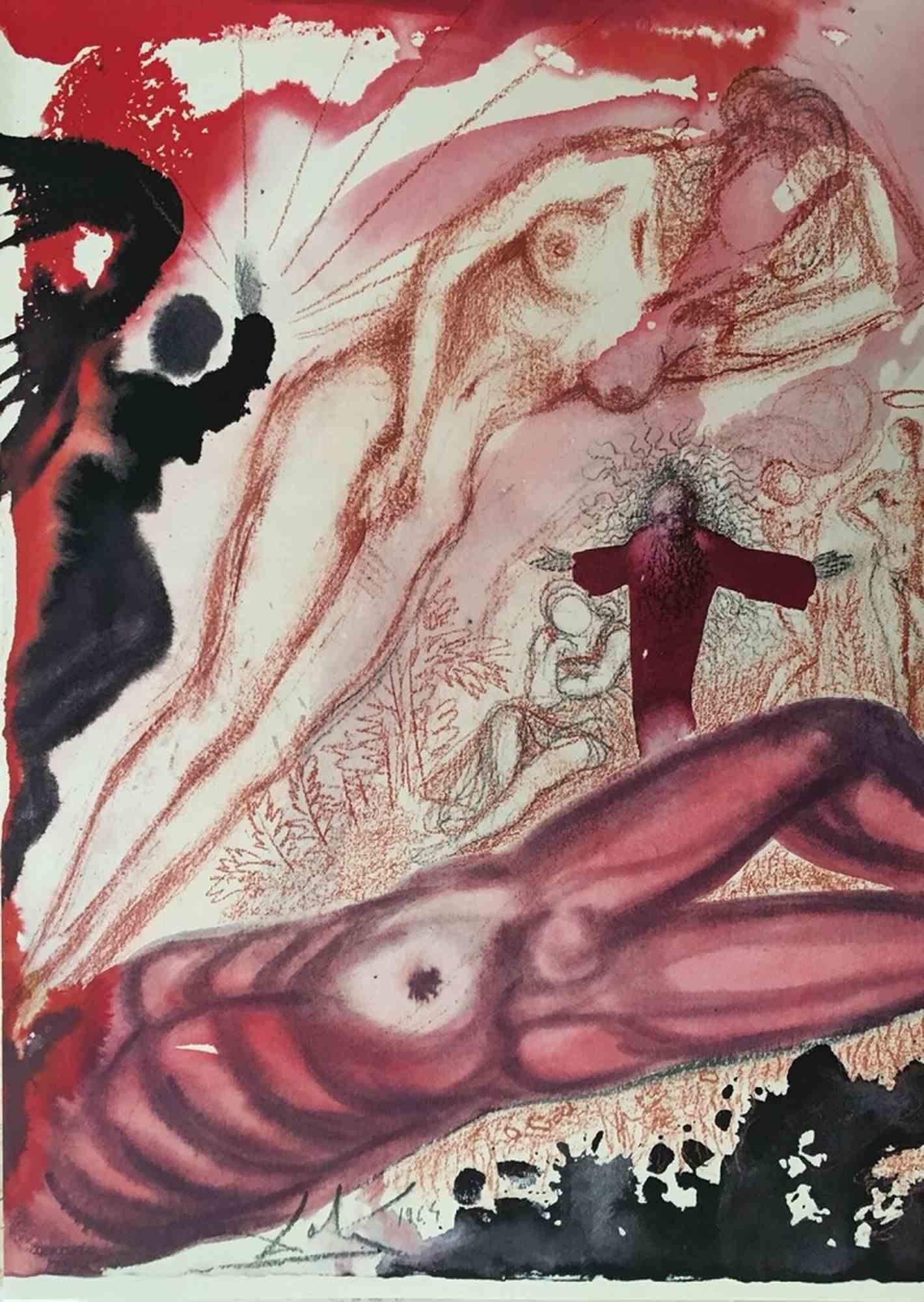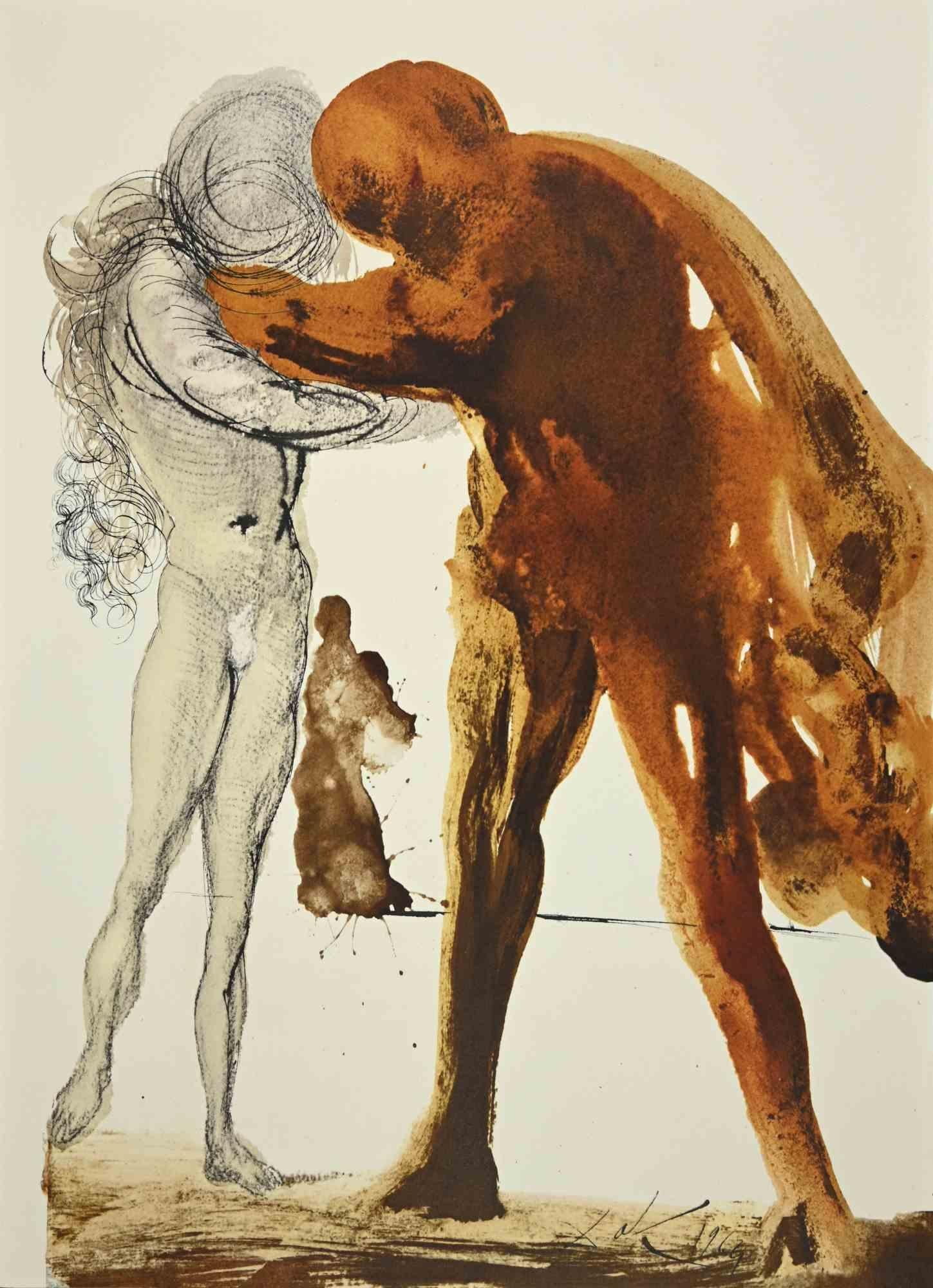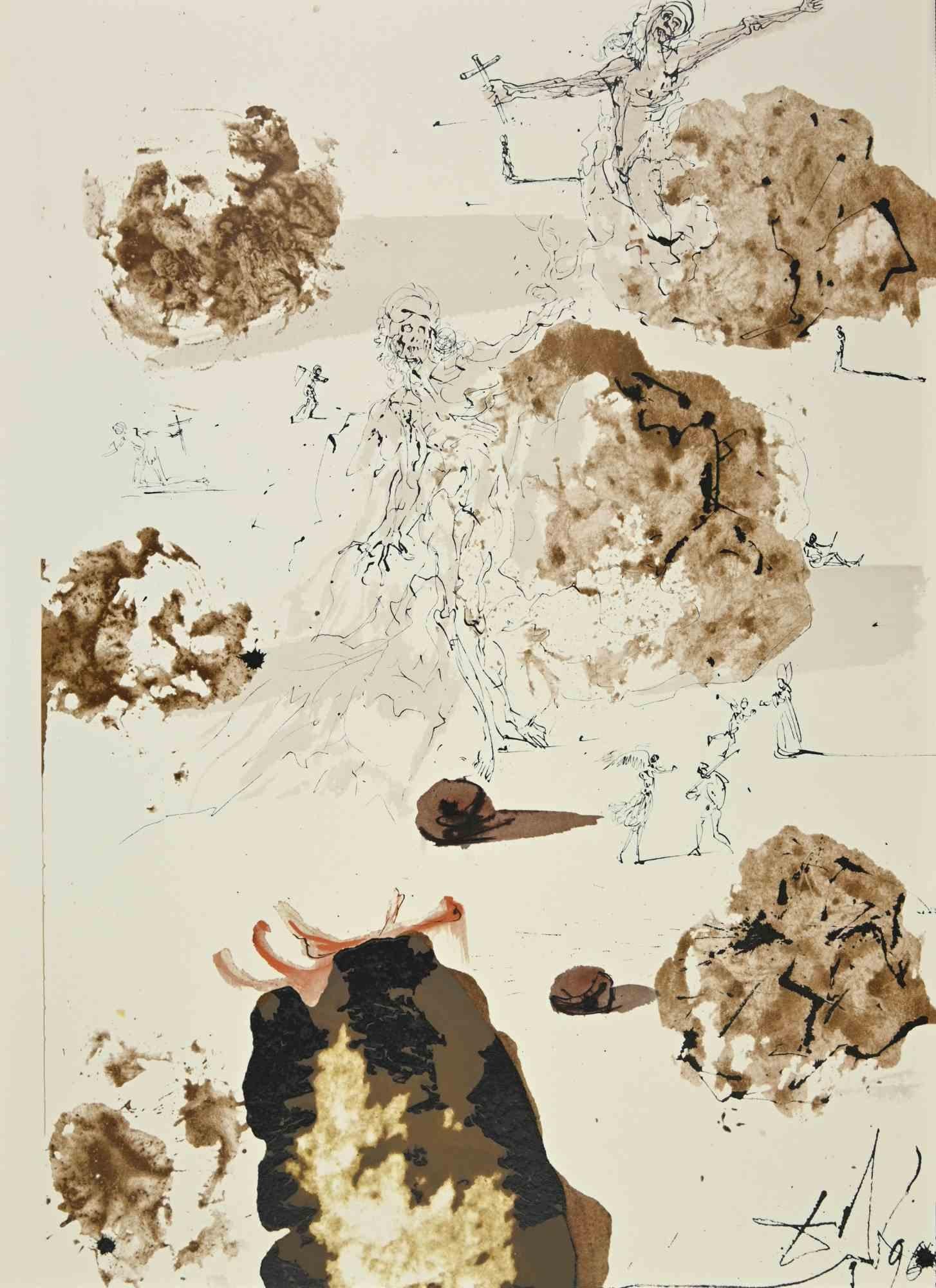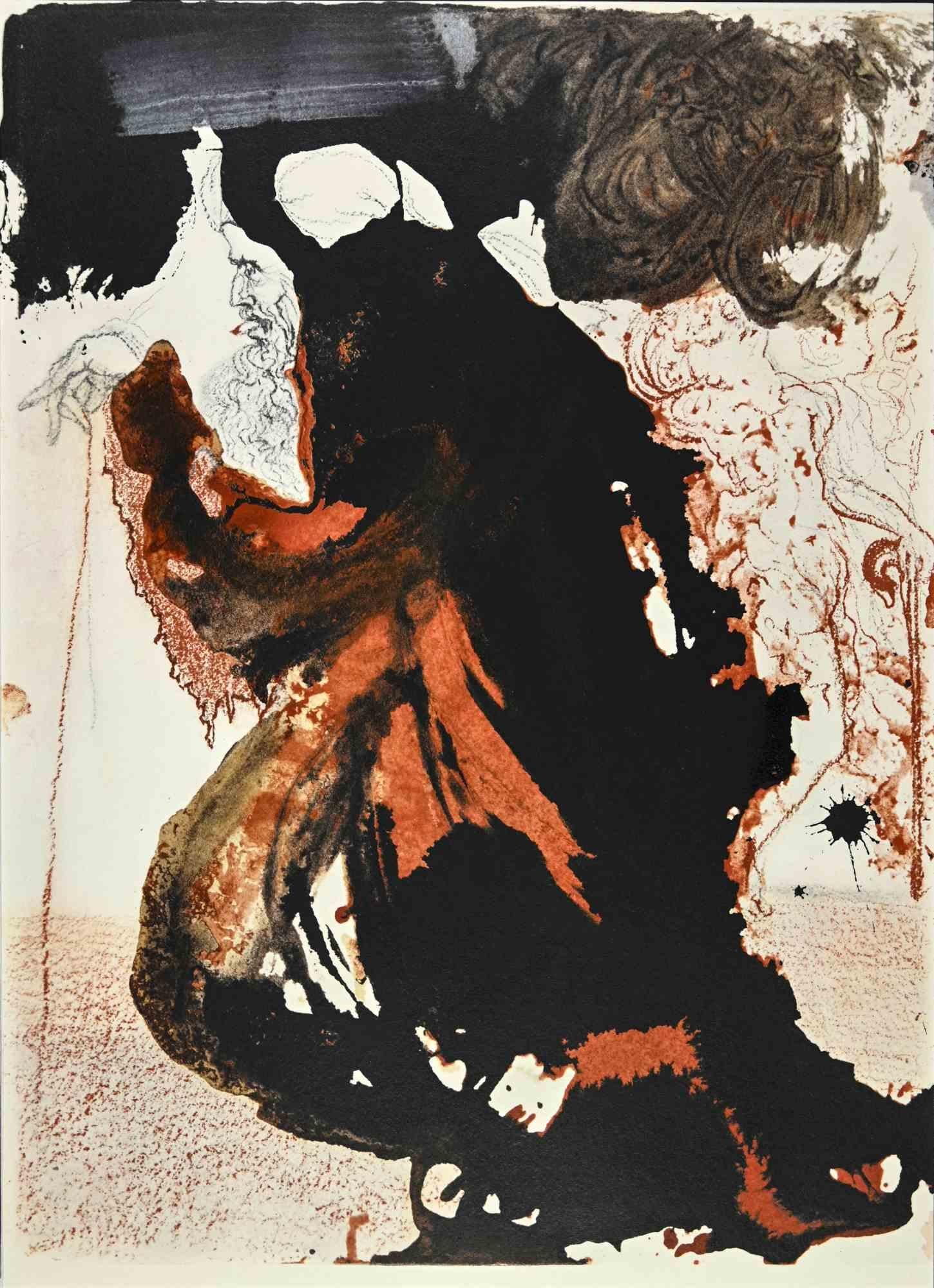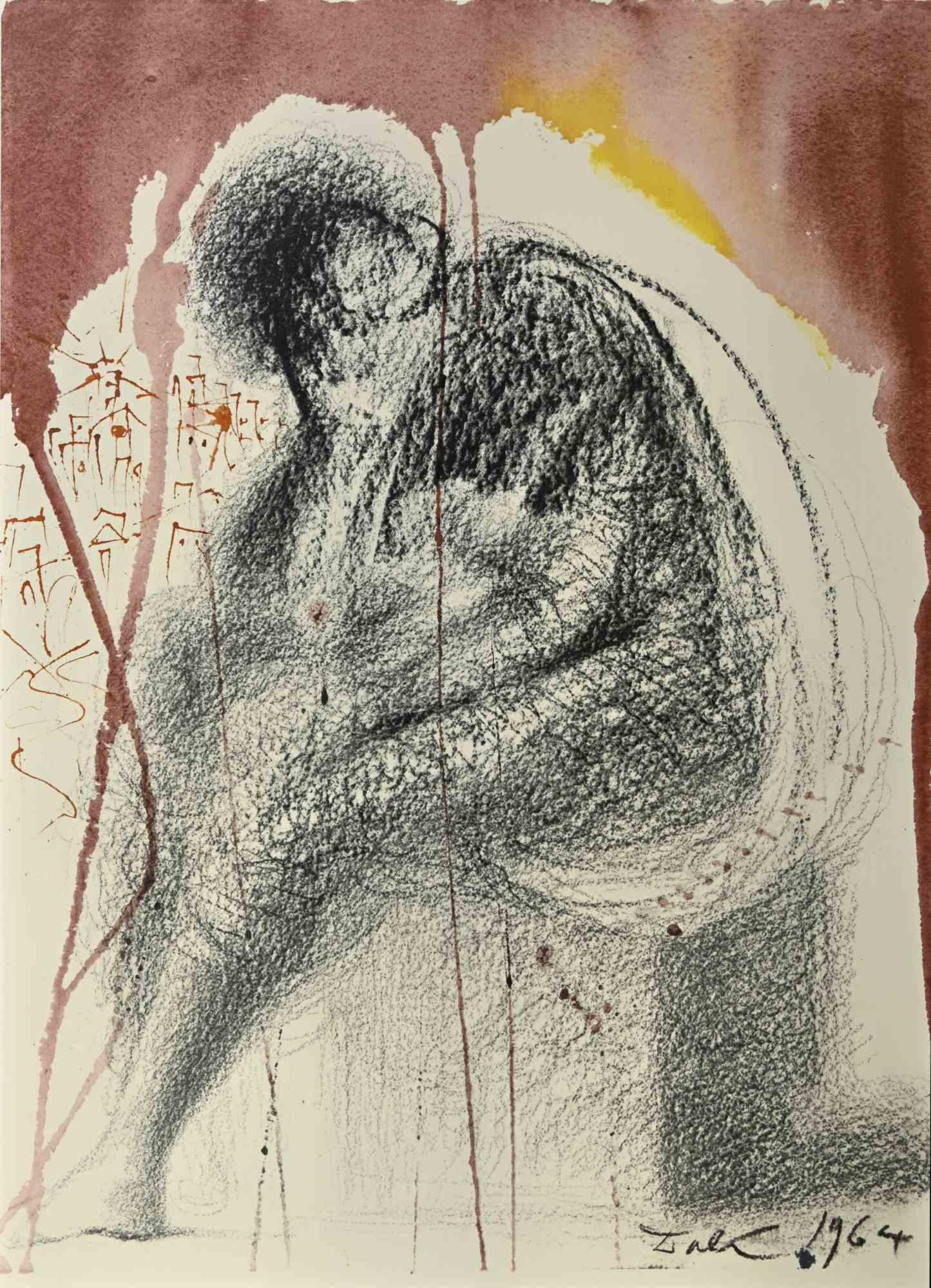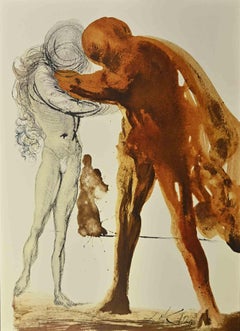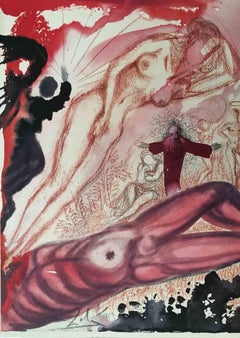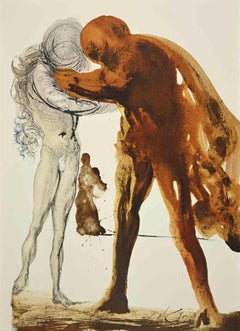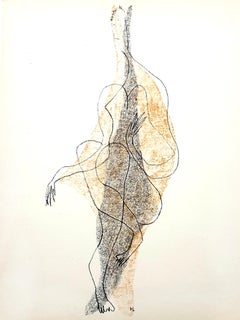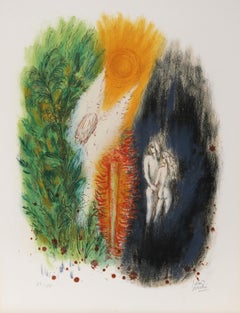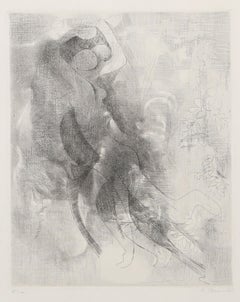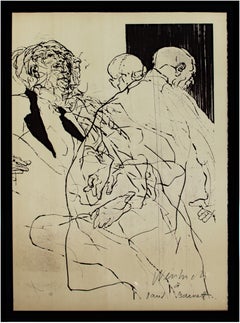Items Similar to Statimque Tobias Visum Recepit - Lithograph - 1967- 1969
Want more images or videos?
Request additional images or videos from the seller
1 of 5
Statimque Tobias Visum Recepit - Lithograph - 1967- 19691969
1969
$540.48
£400.72
€450
CA$742.49
A$810.55
CHF 426.77
MX$9,709.48
NOK 5,458.18
SEK 4,983.41
DKK 3,428.84
About the Item
Statimque Tobias visum recepit ("And immediately Tobit revovered his sight") is an artwork realized in 1964.
It is part of Biblia Sacra vulgatæ editionis published by Rizzoli-Mediolani between 1967 and 1969.
Color lithograph on heavy rag paper. Signed and dated on plate on the lower right margin.
Perfect conditions.
The artwork illustrates a couple looking down upon a lone figure crouched over. Angels hover overtop of the figures. The lithograph is part of the imponent work Biblia Sacra vulgatæ editionis published by Rizzoli-Mediolani between 1967 and 1969. It was illustrated by Salvador Dalí with a suite of 105 colored lithographs after water-color artworks. The paper sheets are signed and dated on plate, and each of them comes with a Japanese paper tissue with a printed biblical quotation. The works also demonstrate Dalí’s artistic spontaneity in the use of the “bulletism” technique, a Dalinian invention where an arquebus (a type of ancient gun) is loaded with ink-filled capsules and then fired against blank sheets of paper. In 1963, Biblia Sacra was commissioned by Giuseppe Albaretto, a very pious man, who was one of Dalí’s closest friends and patrons between the 1950s and the 1960s. Giuseppe Albaretto and his wife Mara commissioned several of Dalí's works, and became important publishers of his etchings and lithographs, including the Biblia Sacra. Through these commissions, Albaretto hoped that Dalí would reconcile with religion. The friendship between the Albarettos and Salvador Dalí provided the art world with some of the most spectacular Surrealist artworks. These works are a few of the most desirable graphic works ever created by the artist. In the preface of the work, the publisher asserts that the lithographs “configure, in both a universal and a personal way, the dynamic vision that characterizes the relationship between men and God”.
Salvador Dalí (Figueres, 1904 – Figueres, 1989) is considered one of the most versatile and prolific artists of the XX century and the founding father of Surrealism. In the course of his long career, he successfully experimented with sculpture, fashion, writing, and filmmaking. In his early use of organic morphology, his work bears the stamp of Pablo Picasso and Joan Miró. His work is also characterized by a fascination with classical art, manifested in the realistic style and religious symbolism of his latest works. Dalí was born near Barcelona to a middle class family. He soon demonstrated an interest in art, and, at the age of 18, he attended the Special Painting, Sculpture and Engraving School of San Fernando in Madrid. His eccentricity was notorious, and at first even more famous than his works. When he traveled to Paris, he met Pablo Picasso in his studio and took inspiration from Cubism. In 1928, he collaborated with Buñuel on Un Chien Andalou, which eventually became a manifest of Surrealism. Surrealists considered recruiting Dalí into their circle. In the next years, Dalí’s paintings illustrated his theories about paranoia. He painted bodies, corps, objects that reflected sexuality, anxiety and fear. In the 1950s, Dalí’s paintings focused on religious themes reflecting his interest
in the supernatural. During that period, he stayed at the St. Regis hotel, where he met Andy Warhol, another eccentric personality that was considered a modern influence for the setting Dalí produced earlier. Dalí epitomizes the idea that life is the greatest form of art; André Breton said about him: “It is with Dalí that, for the very first time, the windows of the mind are wide open”.Statimque Tobias visum recepit ("And immediately Tobit revovered his sight") is an artwork realized by Salvador Dalí in 1964.
It is part of Biblia Sacra vulgatæ editionis published by Rizzoli-Mediolani between 1967 and 1969.
Color lithograph on heavy rag paper. Signed and dated on plate on the lower right margin.
Perfect conditions.
- Attributed to:Salvador Dalí (1904 - 1989, Spanish)
- Creation Year:1969
- Dimensions:Height: 18.9 in (48 cm)Width: 13.78 in (35 cm)Depth: 0.04 in (1 mm)
- Medium:
- Movement & Style:
- Period:
- Framing:Framing Options Available
- Condition:Insurance may be requested by customers as additional service, contact us for more information.
- Gallery Location:Roma, IT
- Reference Number:Seller: T-1404971stDibs: LU650312639282
About the Seller
4.9
Platinum Seller
Premium sellers with a 4.7+ rating and 24-hour response times
1stDibs seller since 2017
7,871 sales on 1stDibs
Typical response time: 1 hour
- ShippingRetrieving quote...Shipping from: Grasse, France
- Return Policy
More From This Seller
View AllFilius Prodigus - Lithograph - 1964
By Salvador Dalí
Located in Roma, IT
Filius Prodigus is a Color lithograph on heavy rag paper realized in 1964, It is part of Biblia Sacra vulgatæ edition is published by Rizzoli-Mediolani between 1967 and 1969.
Signed...
Category
1960s Surrealist Figurative Prints
Materials
Lithograph
Mulier e Latere Viri - Lithograph - 1964
By Salvador Dalí
Located in Roma, IT
Mulier e Latere Viri ("Woman from the Side of Man") is an artwork realized in 1964.
It is part of Biblia Sacra vulgatæ editionis published by Rizzoli-Mediolani between 1967 and 1969...
Category
1960s Surrealist Figurative Prints
Materials
Lithograph
Filius Prodigus - Lithograph - 1964
By Salvador Dalí
Located in Roma, IT
Filius Prodigus is a Color lithograph on heavy rag paper realized in 1964. It is part of Biblia Sacra vulgatæ edition is published by Rizzoli-Mediolani between 1967 and 1969.
Signed...
Category
1960s Surrealist More Prints
Materials
Lithograph
Omnes Gentes in Valle Josaphat - Lithograph - 1964
By Salvador Dalí
Located in Roma, IT
Omnes Gentes in Valle Josaphat is a Color lithograph on heavy rag paper realized in 1964. It is part of Biblia Sacra vulgatæ edition is published by Rizzoli-Mediolani between 1967 an...
Category
1960s Surrealist Figurative Prints
Materials
Lithograph
Trulla Caementarii in Manu Domini - Lithograph - 1964
By Salvador Dalí
Located in Roma, IT
Trulla caementarii in manu Domini is a Color lithograph on heavy rag paper realized in 1964. It is part of Biblia Sacra vulgatæ edition is published by Rizzoli-Mediolani between 1967...
Category
1960s Surrealist Figurative Prints
Materials
Lithograph
Sedet Sola Civitas - Lithograph - 1964
By Salvador Dalí
Located in Roma, IT
Holy Bible - Sedet sola civitas is Color lithograph on heavy rag paper realized in 1964. It is part of Biblia Sacra vulgatæ edition is published by Rizzoli-Mediolani between 1967 an...
Category
1960s Surrealist More Prints
Materials
Lithograph
You May Also Like
Henri Laurens - Character - Original Lithograph
By Henri Laurens
Located in Collonge Bellerive, Geneve, CH
Marino Marini - Character - Original Lithograph
1951
Dimensions: 32 x 24 cm
From XXe siècle
Unsigned and unumbered as issued
Category
1950s Surrealist Abstract Prints
Materials
Lithograph
I from Visions of the Bible, Modern Lithograph by Reuven Rubin
By Reuven Rubin
Located in Long Island City, NY
Reuven Rubin, Israeli (1893 - 1974) - I from Visions of the Bible, Year: 1972, Medium: Lithograph, signed and numbered in pencil, Edition: 83/150, Image Size: 25 x 18 inches, Siz...
Category
1970s Modern Figurative Prints
Materials
Lithograph
Composition, Signed Surrealist Etching by Andre Beaudin
By Andre Beaudin
Located in Long Island City, NY
Composition
Andre Beaudin, French (1895–1972)
Date: 1934
Etching on Arches, signed and numbered in pencil
Edition of 81/100
Image Size: 11.75 x 9.25 inches
Size: 24.25 x 18.25 in. (6...
Category
1930s Surrealist Nude Prints
Materials
Etching
'Il bouge sans arrêt' original signed lithograph poster after drypoint, 1960s
By Claude Weisbuch
Located in Milwaukee, WI
This poster is a lithographic enlargement of the dry point print 'Il bouge sans arrêt' by the French artist Claude Weisbuch. The image is an early example of his explorations into th...
Category
1960s Contemporary Figurative Prints
Materials
Lithograph
IV from Visions of the Bible, Modern Lithograph by Reuven Rubin
By Reuven Rubin
Located in Long Island City, NY
Reuven Rubin, Israeli (1893 - 1974) - IV from Visions of the Bible, Year: 1972, Medium: Lithograph, signed and numbered in pencil, Edition: 83/150, Image Size: 25 x 18 inches, Si...
Category
1970s Modern Figurative Prints
Materials
Lithograph
Israeli Surrealist Abstract Lithograph Naftali Bezem
By Naftali Bezem
Located in Surfside, FL
Naftali Bezem (Hebrew: נפתלי בזם; born November 27, 1924) is an Israeli painter, muralist, and sculptor.
Bezem was born in Essen, Germany, in 1924. His early adolescence was spent...
Category
20th Century Modern Prints and Multiples
Materials
Lithograph
More Ways To Browse
Crouching Figure
Salvador Dali 1967
Paris Gallery Poster
Picasso 1966
Picasso Bottle
Picasso Color Lithograph
Picasso Horse Art
Picasso Toro Y Toreros 1959
Pierre Auguste Renoir Le Chapeau Epingle
Pope Innocent
Renoir Chapeau Epingle
Robert Kasimir Etchings
Romare Bearden Jazz Series
Roy Lichtenstein Signed Lithograph
Salvador Dali Paradise
Salvador Dali Signed Prints Don Quixote
Salvador Dali Untitled
Shepard Fairey Power
